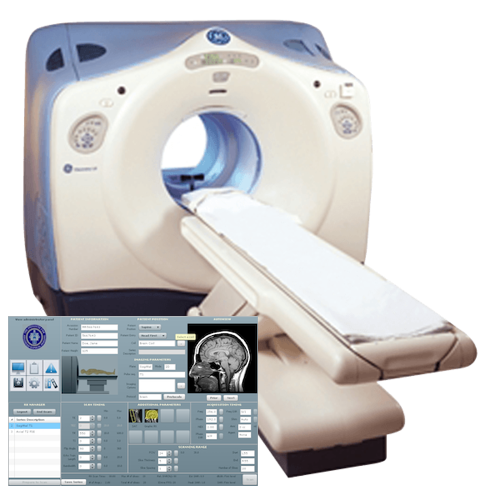|
Iodine is a trace mineral that is vital to the function of the thyroid gland. The human body does not make iodine, so all iodine intake must come from either our diet or from supplements.
MSM (MethylSulfonylMethane) is an abbreviation of methylsulfonylmethane, an organic form of sulfur. The chemical formula of MSM is CH3SO2CH3. It is the form in which sulfur is biologically active and appears in nature in all living organisms.
$39.95
|
|
Tumor Markers
Tumor Markers
Tumor markers are substances that are produced by cancer or by other cells of the body in response to cancer or certain benign (noncancerous) conditions. Most tumor markers are made by normal cells as well as by cancer cells; however, they are produced at much higher levels in cancerous conditions. These substances can be found in the blood, urine, stool, tumor tissue, or other tissues or bodily fluids of some patients with cancer. Most tumor markers are proteins. However, more recently, patterns of gene expression and changes to DNA have also begun to be used as tumor markers.
Tumor marker levels may be measured before treatment to help doctors plan the appropriate therapy. In some types of cancer, the level of a tumor marker reflects the stage (extent) of the disease and/or the patient’s prognosis (likely outcome or course of disease). More information about cancer staging is available on the Staging page. Tumor markers may also be measured periodically during cancer therapy. A decrease in the level of a tumor marker or a return to the marker’s normal level may indicate that the cancer is responding to treatment, whereas no change or an increase may indicate that the cancer is not responding. Tumor markers may also be measured after treatment has ended to check for recurrence (the return of cancer). How are tumor markers measured? A doctor takes a sample of tumor tissue or bodily fluid and sends it to a laboratory, where various methods are used to measure the level of the tumor marker. If the tumor marker is being used to determine whether treatment is working or whether there is a recurrence, the marker’s level will be measured in multiple samples taken over time. Usually these “serial measurements,” which show whether the level of a marker is increasing, staying the same, or decreasing, are more meaningful than a single measurement. What tumor markers are currently being used, and for which cancer types? A number of tumor markers are currently being used for a wide range of cancer types. Although most of these can be tested in laboratories that meet standards set by the Clinical Laboratory Improvement Amendments, some cannot be and may therefore be considered experimental. Tumor markers that are currently in common use are listed below. ALK gene rearrangements and overexpression
Alpha-fetoprotein (AFP)
Beta-2-microglobulin (B2M)
Beta-human chorionic gonadotropin (Beta-hCG)
BRCA1 and BRCA2 gene mutations
BCR-ABL fusion gene (Philadelphia chromosome)
BRAF V600 mutations
C-kit/CD117
CA15-3/CA27.29
CA19-9
CA-125
Calcitonin
Carcinoembryonic antigen (CEA)
CD20
Chromogranin A (CgA)
Chromosomes 3, 7, 17, and 9p21
Circulating tumor cells of epithelial origin (CELLSEARCH®)
Cytokeratin fragment 21-1
EGFR gene mutation analysis
Estrogen receptor (ER)/progesterone receptor (PR)
Fibrin/fibrinogen
HE4
HER2/neu gene amplification or protein overexpression
Immunoglobulins
KRAS gene mutation analysis
Lactate dehydrogenase
Neuron-specific enolase (NSE)
Nuclear matrix protein 22
Programmed death ligand 1 (PD-L1)
Prostate-specific antigen (PSA)
Thyroglobulin
Urokinase plasminogen activator (uPA) and plasminogen activator inhibitor (PAI-1)
5-Protein signature (OVA1®)
21-Gene signature (Oncotype DX®)
70-Gene signature (Mammaprint®)
Can tumor markers be used in cancer screening? Because tumor markers can be used to assess the response of a tumor to treatment and for prognosis, researchers have hoped that they might also be useful in screening tests that aim to detect cancer early, before there are any symptoms. For a screening test to be useful, it should have very high sensitivity (ability to correctly identify people who have the disease) and specificity (ability to correctly identify people who do not have the disease). If a test is highly sensitive, it will identify most people with the disease—that is, it will result in very few false-negative results. If a test is highly specific, only a small number of people will test positive for the disease who do not have it—in other words, it will result in very few false-positive results. Although tumor markers are extremely useful in determining whether a tumor is responding to treatment or assessing whether it has recurred, no tumor marker identified to date is sufficiently sensitive or specific to be used on its own to screen for cancer. For example, the prostate-specific antigen (PSA) test, which measures the level of PSA in the blood, is often used to screen men for prostate cancer. However, an increased PSA level can be caused by benign prostate conditions as well as by prostate cancer, and most men with an elevated PSA level do not have prostate cancer. Initial results from two large randomized controlled trials, the NCI-sponsored Prostate, Lung, Colorectal, and Ovarian Cancer Screening Trial (PLCO), and the European Randomized Study of Screening for Prostate Cancer, showed that PSA testing at best leads to only a small reduction in the number of prostate cancer deaths. Moreover, it is not clear whether the benefits of PSA screening outweigh the harms of follow-up diagnostic tests and treatments for cancers that in many cases would never have threatened a man’s life. Similarly, results from the PLCO trial showed that CA-125, a tumor marker that is sometimes elevated in the blood of women with ovarian cancer but can also be elevated in women with benign conditions, is not sufficiently sensitive or specific to be used together with transvaginal ultrasound to screen for ovarian cancer in women at average risk of the disease. An analysis of 28 potential markers for ovarian cancer in blood from women who later went on to develop ovarian cancer found that none of these markers performed even as well as CA-125 at detecting the disease in women at average risk. What kind of research is under way to develop more accurate tumor markers? Cancer researchers are turning to proteomics (the study of protein structure, function, and patterns of expression) in hopes of developing new biomarkers that can be used to identify disease in its early stages, to predict the effectiveness of treatment, or to predict the chance of cancer recurrence after treatment has ended. Scientists are also evaluating patterns of gene expression for their ability to help determine a patient’s prognosis or response to therapy. For example, results of the NCI-sponsored Trial Assigning IndividuaLized Options for Treatment (Rx), or TAILORx , showed that for women recently diagnosed with lymph node–negative, hormone receptor–positive, HER2-negative breast cancer who had undergone surgery, those with the lowest 21-gene (Oncotype Dx®) recurrence scores had very low recurrence rates when given hormone therapy alone and thus can be spared chemotherapy. The trial is ongoing to see whether women at intermediate risk of recurrence, based on the 21-gene test, do better with chemotherapy in addition to hormone therapy than with hormone therapy alone. More information on NCI’s role in supporting research on novel tools and methods for diagnosing cancer is available on the Diagnosis research page. Selected References
|
|
|

OPEN 24 HOURS: ACCIDENT EMERGENCY, LAB SERVICES, IMAGING SERVICES & PHARMACY











